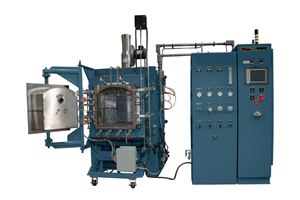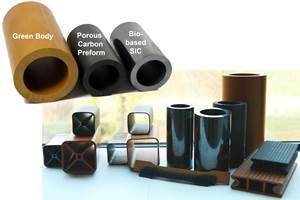CompositesWorld News for Feb. 07, 2020
Read news from Axiom Materials, KORDSA, Hexcel, National Research Council Canada, Stelia Aerospace North America, FRIMO, and Hennecke
Axiom Materials opens High-temperature Composite Center
The 3,500-square-meter facility expands the U.S.-based company’s CMC production capabilities to support increasing demand in aerospace and industrial applications.
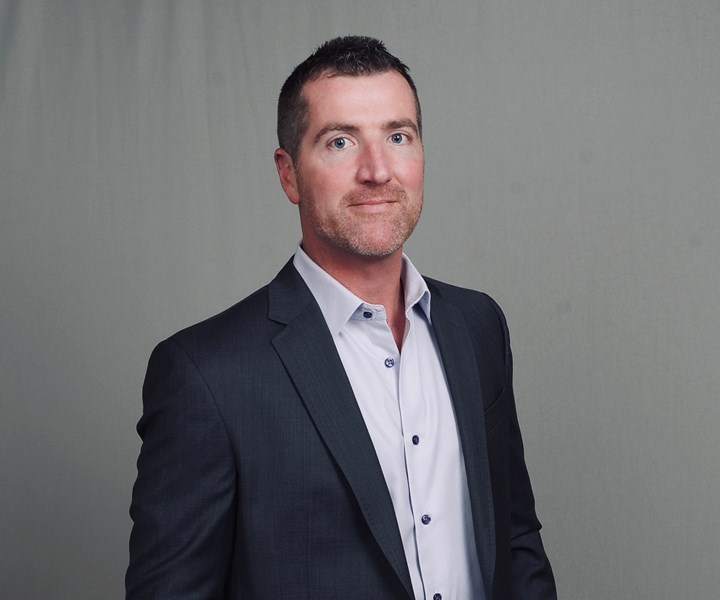
“On behalf of our entire team, I am very excited to announce our High-temperature Composites Center. This is an important step for us, as we are currently supplying high-temperature composite products on multiple programs in both aerospace and industrial sectors, and expect meaningful growth in both,” says Johnny Lincoln, president of Axiom Materials Inc. (pictured). Source | Kordsa
Axiom Materials (Santa Ana, Calif., U.S.), which was acquired by Kordsa (Istanbul, Turkey) in 2019, has inaugurated a 3,500-square-meter facility for the development, analysis, and production of ceramic matrix composite (CMC) materials. The High-Temperature Composite Center (HTCC) is intended to enhance Axiom Materials’ CMC production capabilities to support increasing demand for high-temperature composites in aerospace and industrial applications.
The HTCC is slated to include specialized prepreg coaters designed to produce both unidirectional and woven products for high-temperature composite applications. The Center will also house dedicated quality and R&D laboratories with ceramic-capable test equipment, dedicated ISO Class 8 cleanroom for prepreg layup, and autoclave curing and sintering capabilities to produce developmental and certification panels. The facility is intended to isolate Axiom Materials’ high-temperature prepregs from other products lines, due to the special manufacturing and technical sensitivities of the products.
“...The acquisition of Axiom Materials is a major step in our growth strategy as we pursue advanced composite technologies for aerospace as well as next-generation industrial and transportation applications,” says Murat Arcan, COO of Composites, Construction Reinforcement and Business Development at Kordsa. “Axiom Materials reshapes the composite industry with their R&D activities, especially in the area of high-temperature composites. Through these contributions, the company will continue to contribute to the advanced composite technologies for next-generation industrial and transportation applications. With the full support of our composite operations and expertise, there is little doubt about that Axiom will continue to lead the way in oxide-oxide CMC and related products with the High Temperature Composites Center.”
“While oxide-oxide and related high-temperature composites have traditionally been deployed for specific requirements such as thermal resistance, weight, low creep, low corrosivity, or low dielectric properties, application engineers are now recognizing the complete value they provide, including greenhouse gas reduction, improved fuel efficiencies, noise reduction and resistance to long-term environmental degradation,” says Johnny Lincoln, Ph.D., president of Axiom Materials Inc. “These values, alongside our cost-down strategies, have created higher demand for our high-temperature composite materials. The establishment of this center shows that we are serious about our commitment to the market’s growth and toward ensuring we have the capacity, test capability and material & process engineering expertise required to continue to qualify and support future programs.”
Hexcel, NaCa Systems develop hybrid carbon/wood fiber composite car seat back
Benefits are said to include a 40% weight savings and improved carbon footprint.

Source | Hexcel
Hexcel Corp. (Stamford, Conn., U.S.) is collaborating with NaCa Systems, a Tier 1 supplier of natural fiber composite automotive interior parts, to develop a lightweight carbon fiber prepreg and wood fiber composite sportscar seat back using a rapid press molding process.
The goal? To validate a short cycle time process for hybrid carbon fiber-reinforced polymer (CFRP) and wood fiber composite parts.
As part of the project, Hexcel supplies NaCa Systems with an optimized version of its HexPly M77CS epoxy prepreg material. According to the company, HexPly M77CS is a fast curing hotmelt, thermosetting epoxy matrix, specifically designed for prepreg applications for which short cure cycles and clear surfaces with perfect aesthetics are required.

Source | Hexcel
Hexcel’s newly developed version of the M77CS prepreg has an increased resin content to optimize the CFRP to wood fiber composite bond strength despite the slightly higher resin uptake seen with the natural material component. The carbon fiber prepreg is cured at around 145˚C for four to five minutes and can be fully integrated into NaCa Systems existing production lines and metallic tooling.
The benefits of the hybrid composite component are said to include a 40% weight savings compared to a typical injection-molded plastic component, plus an improved carbon footprint compared to a fully carbon fiber part. Unlike plastic molded parts, the prepreg and wood fiber structure doesn’t produce sharp edged pieces when damaged, increasing passenger safety in crash scenarios, and the wood fiber composites increase sound absorption for improved NVH damping within the vehicle.
“... For us, it is important to work with a prepreg supplier who can tailor the materials to work with our processes and that can deliver consistent quality as we grow rapidly in response to OEM’s continued drive for more sustainable composite solutions,” says Aleš Kopal, CEO of NaCa Systems, on working with Hexcel.
STELIA Aerospace participates in AILE project with Bombardier
STELIA Aéronautique Canada’s R&T teams will lead the project to build a thermoplastic composite trailing edge flap as a testbed for Bombardier.
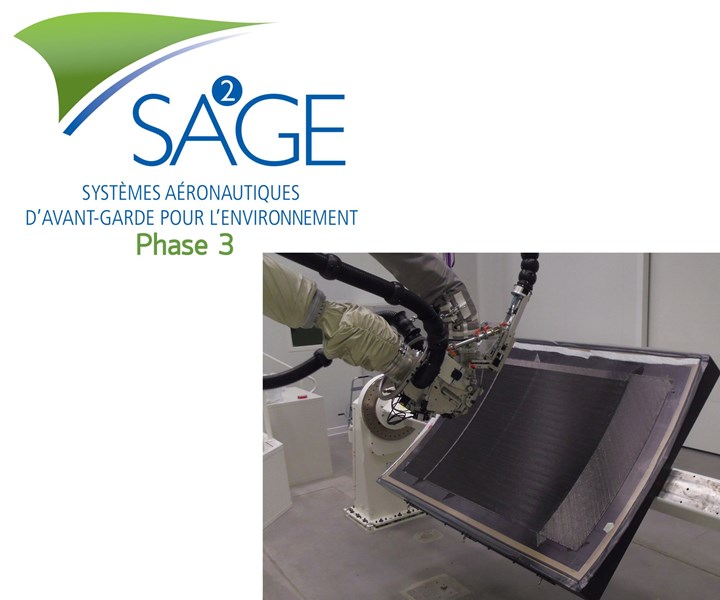
STELIA Aerospace is already a leader in composites research, such as this dry fiber automated fiber placement (AFP) part in its Méaulte, France STELIALAB. It now participates in the AILE project with Bombardier, part of the third phase SA²GE greener aircraft mobilization project. SOURCE: SA2GE and STELIA Aerospace.
STELIA Aerospace (Toulouse, France) has started a project with Bombardier (Montreal, Canada) through its two Canadian subsidiaries — STELIA Aéronautique Canada (Mirabel, Québec) and STELIA Aerospace North America (Lunenburg, Nova Scotia) — as part of a new collaborative research project, AILE (Aile Intelligente et Légère pour l’Environnement or Intelligent and Light Wing for Environment).
AILE is part of the third phase of the SA2GE (Systèmes Aéronautiques d’Avant-Garde pour l’Environnement /Cutting-edge Aeronautical Systems for Environment) greener aircraft mobilization project, supported by the government of Québec. This project is part of a 3-year partnership in which STELIA Aerospace will develop and produce a high-lift trailing edge flap made of thermoplastic composite, to be used as a testbed for Bombardier.
STELIA Aéronautique Canada’s R&T teams, supported by the France-based R&T team, will manage the project and its design and scaling phase. Manufacturing of the tooling and the full-scale demonstrator will be managed by STELIA Aerospace North America.
For this new R&T project, STELIA Aerospace will be backed by two partners : FusiA Impression 3D Metal Inc. for the design and production of 3D printed metal hinges (a Québec company whose French sister-company is already a partner of STELIA Aerospace in the SAMBA project - Shock Absorber Material for Bird Shield Application) and the CNRC (Conseil National de Recherches du Canada – Canadian National Research Council, Ottawa, Ontario), already a partner of STELIA Aerospace for metal research projects, who will bring its know-how and resources on thermoplastic composite materials.
STELIA Aerospace has been engaged with Bombardier for three years already, in a first collaborative R&T project aiming at reducing the cycle time necessary to produce a metallic wing frame for business jets.
“This new project with Bombardier highlights our wish to build strong links with our customer and will enable us to pursue our skill development strategy, while developing our footprint in Canada in terms of Research & Technology,” said Cédric GAUTIER, CEO of STELIA Aerospace.
See the breadth of STELIA’s R&T developments on its R&T webpage, scrolling down to see its latest R&T video. Also read CW’s tour of its Méaulte production facility and STELIALAB R&T center.
FRIMO, Hennecke form strategic partnership for automotive applications
The companies will combine their core competencies with a focus on polyurethane and other materials applications for the production of passenger vehicles.

Source | FRIMO and Hennecke
Effective Feb. 1, 2020, the FRIMO Group (Lotte, Germany) and Hennecke Group (Sankt Augustin, Germany) have announced a close partnership in the sector of polyurethane and other reactive plastic applications for the automobile industry. Specifically, the partnership concerns products and systems associated with the production of passenger cars.
FRIMO is contributing its core competencies in molded foam, elastomers and composites, and is supplying new systems, corresponding services such as retrofitting and technical services. FRIMO will also offer the entire spare parts sales for the affected product areas, and will cease production of metering technology, instead concentrating on the areas of tooling technology, systems technology and periphery equipment as well as associated services. All parts for handling raw materials will be manufactured and supplied exclusively by Hennecke in all markets.
Hennecke is contributing metering and mixhead technology as well as all other systems for handling raw materials for the automotive sector, including storage, transportation, preparation and processing. Hennecke will also supply the periphery equipment required for the respective case of application. In future FRIMO will be responsible for the sales of Hennecke products from the partnership, for new systems as well as for the entire service area. As a polyurethane specialist, Hennecke will focus on its core competences in high and low pressure metering in the form of individual metering machines outside of the automotive sector, as well as systems technology in the production of refrigeration units, slabstock products and sandwich panels.
According to the companies, customers will benefit from comprehensive system solutions and individual service from one source as well as a common point of contact. Customers will also experience a unified customer interface, ranging from tooling to plant automation up to process technology.
“The synergies from the partnership provide absolute added value for our customers in the automotive industry,” says Dr. Christof Bönsch, CEO of the FRIMO Group. “Under the partnership, we are uniting the core competences of two companies who complement each other perfectly in terms of strategy and operation.”
“In the future, we want to be even more striking and innovative, offering our customers efficient and competitive solutions under the label ‘Automotive Alliance,’” says Thomas Wildt, CEO of the Hennecke Group. “Our target course is clearly focused on the growth of both companies, and this means new perspectives for our customers as well as for our staff.”
Global wind capacity value predicted to increase tenfold over next decade
According to research from Navigant Research, the global wind industry is expected to install more than 626,800 MW of new capacity over the next decade.
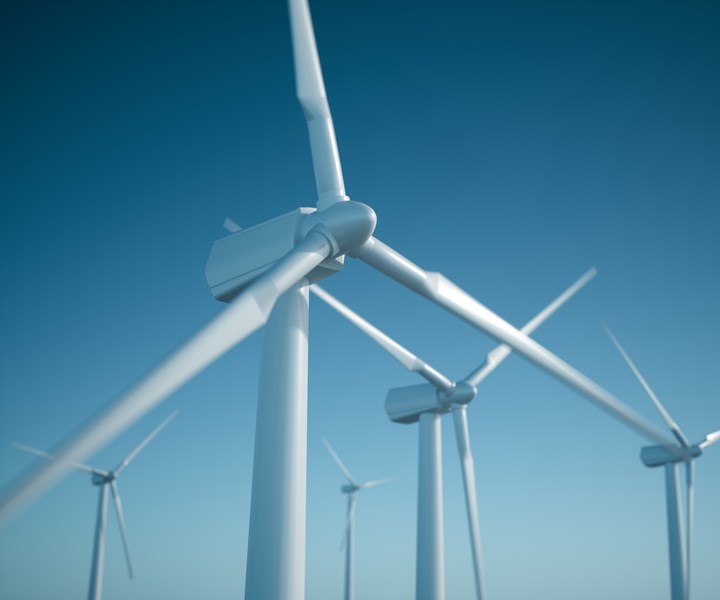
The most recent wind energy report from energy research and advisory firm Navigant Research (Boulder, Colo., U.S.) predicts that global offshore wind development to experience a 16% compound annual growth rate over a 10-year forecast period.
The report analyzes the global wind power market to assess current and future development cycles and projections for new installed wind capacity. The report provides global market forecasts, segmented by region, through 2028.
According to the report, China, Taiwan and Europe are the leading markets, with the U.S. soon to join when the first large-scale offshore wind plants are commissioned along the northeast coast. The global wind power industry is expected to install more than 626,800 megawatts of new capacity over the next decade. This new capacity represents a market worth more than $92 billion in 2019 and more than $1 trillion over the forecast decade.
The report also examines the annual installed capacity of top global wind turbine OEMs and related market share and ranking. The most recent year-end 2018 data shows Vestas (Aarhus, Denmark) retaking the global total annual capacity lead and three other western OEMs falling in the global total annual rankings. The turbine OEM market dynamics show consolidation throughout the sector, with top OEMs commanding larger market shares.
Global wind industry installations were flat from 2017 to 2018, but Navigant reports that those figures represent profound shifts throughout global wind power markets. Some mature markets are facing flat or declining growth due to adjustments to more competitive policy environments and reductions or eliminations of subsidies. However, these changes are being offset by increasing wind power development in countries that were not previously wind power markets.
“Growth in wind capacity is led by countries in Asia Pacific and non-traditional markets in Europe, Latin America and the Middle East, and Africa,” says Jesse Broehl, senior research analyst with Navigant Research. “Wind power is being developed not only in a greater variety of countries but also increasingly in offshore as well as onshore.”
Related Content
AMULET project funds 24 projects in composites, CMCs, metals
Trans-European project finalists for first open call identify material and process innovations in building, aerospace and aeronautics, energy and automotive sectors.
Read MoreL&L Furnace deliver atmosphere-controlled retort furnace for CMC
XLC3348 furnace model is tailored to produce lightweight CMC components for Midwestern aerospace manufacturer.
Read MoreBio-based SiC ceramics from wood polymer composites
Austrian research institute Wood K plus makes 95% silicon carbide ceramics more sustainable (>85% bio/recycled content), enables 3D shapes via extrusion, injection molding and 3D printing.
Read MoreRATH prepares for production of advanced oxide ceramic fiber for CMC
New facility in Germany is part of regional supply chain and vision to lead green energy transition using CMC, supported by German government and Composites United’s Ceramic Composites network.
Read MoreRead Next
Composites end markets: Energy (2024)
Composites are used widely in oil/gas, wind and other renewable energy applications. Despite market challenges, growth potential and innovation for composites continue.
Read MoreFrom the CW Archives: The tale of the thermoplastic cryotank
In 2006, guest columnist Bob Hartunian related the story of his efforts two decades prior, while at McDonnell Douglas, to develop a thermoplastic composite crytank for hydrogen storage. He learned a lot of lessons.
Read MoreCW’s 2024 Top Shops survey offers new approach to benchmarking
Respondents that complete the survey by April 30, 2024, have the chance to be recognized as an honoree.
Read More
.jpg;width=70;height=70;mode=crop)















.jpg;maxWidth=300;quality=90)






